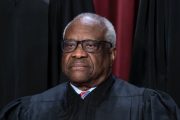
Despite an autopsy report that said George Floyd did not die solely because a police officer restrained him by applying a knee to the back of Floyd’s neck, the city council of Minneapolis, Minnesota, voted unanimously to pay Floyd’s family $27 million.
Floyd’s autopsy and comments from the medical examiner were clear. Floyd showed no signs of life-threatening injuries, and died of a drug overdose likely complicated by cardiovascular disease and other medical problems.
The settlement coincided with jury selection in the murder trial of Derek Chauvin, who is accused of killing Floyd. Three other policemen also face trial this summer.
The Vote
Floyd’s family, the city’s Star-Tribune reported, played the race card:
They argued that the officers showed a “reckless disregard” for his civil rights by using deadly force in non-deadly circumstances and that the city engaged in a culture of “killology,” failed to terminate dangerous officers and fostered a culture of racism. …
“We know that no amount of money can ever address the intense pain and trauma caused by his death, for George Floyd’s family and to so many people in our community who are grieving,” City Council President Lisa Bender said. “Minneapolis has been fundamentally changed by this time of racial reckoning.”
The settlement with the Floyd family, the newspaper observed, far surpasses the $20 million award to the family of Justine Ruszczyk Damond. A black officer killed her, but no one cared and the nation did not go up in flames.
“Including the Floyd settlement, Minneapolis will have spent at least $71 million in the past 15 years to settle officer misconduct claims or lawsuits,” the newspaper reported.
It is also the largest payout of its kind in the nation.
The family will donate $500,000, a whopping 1.8 percent of settlement, “for the benefit of the community around 38th and Chicago.”
Why Floyd Died
As The New American reported after Floyd’s autopsy was released, Chauvin was not, in the end, responsible for Floyd’s death.
Floyd repeatedly resisted arrest, and began claiming he could not breathe before Chauvin pinned him to the ground, a sign that he had taken fentanyl, the drug that killed him.
Floyd had ingested a “fatal level of fentanyl” and his lungs were two to three times their normal weight, the coroner told an assistant prosecutor. Fentanyl, a respiratory depressant, is 50 to 100 times more powerful than morphine. Floyd told officers he had been “hooping,” meaning the rectal administration of a drug.
The final autopsy disclosed multiple “natural diseases,” including “severe” coronary artery disease, high blood pressure, and hypertensive heart disease. Floyd also suffered with cardiomegaly, an enlarged heart.
Floyd suffered multiple “blunt force” wounds, the autopsy report said, but no life-threatening injuries.
Nor did Floyd show petechiae — small red or purple spots in the eyes or skin from bleeding capillaries. Those usually occur in strangulation or traumatic asphyxia; i.e., increased pressure on the neck of the kind that Chauvin applied to Floyd.
Floyd also had contracted the Chinese Virus, a deadly killer for those with serious comorbidities of the type Floyd had.
Chauvin On Trial
Chauvin is on trial for second-degree unintentional and third-degree murder and second-degree manslaughter.
Seven jurors were empaneled this week, the newspaper reported: “one multiracial woman in her 20s, one Black man in his 30s, one Hispanic man in his 20s, a white woman in her 50s, and three white men, two in their 30s and one in his 20s.”
Prosecutors exercised one of their strikes to exclude “a husband and father who served in the Army Reserve for eight years and was deployed to Iraq,” the Star-Tribune reported:
He was questioned extensively about whether he could give equal weight to the testimony of police officers vs. bystanders at the scene. “Being in the military, it’s easy for bystanders to say how they would react in that situation,” the man said, while insisting he would not give law enforcement an edge in credibility.
On the other hand, one of the seven doesn’t like Chauvin:
The woman said the bystander video left her with a somewhat negative view of Chauvin, explaining that “a man died, and I am not sure that’s procedure. … Not all police are bad, but the bad-behavior police need to go.” At the same time, she acknowledged sympathy for Floyd and the officers at the scene that night, saying, “Everyone’s lives are changed by this incident … and it’s not easy for anyone.”



